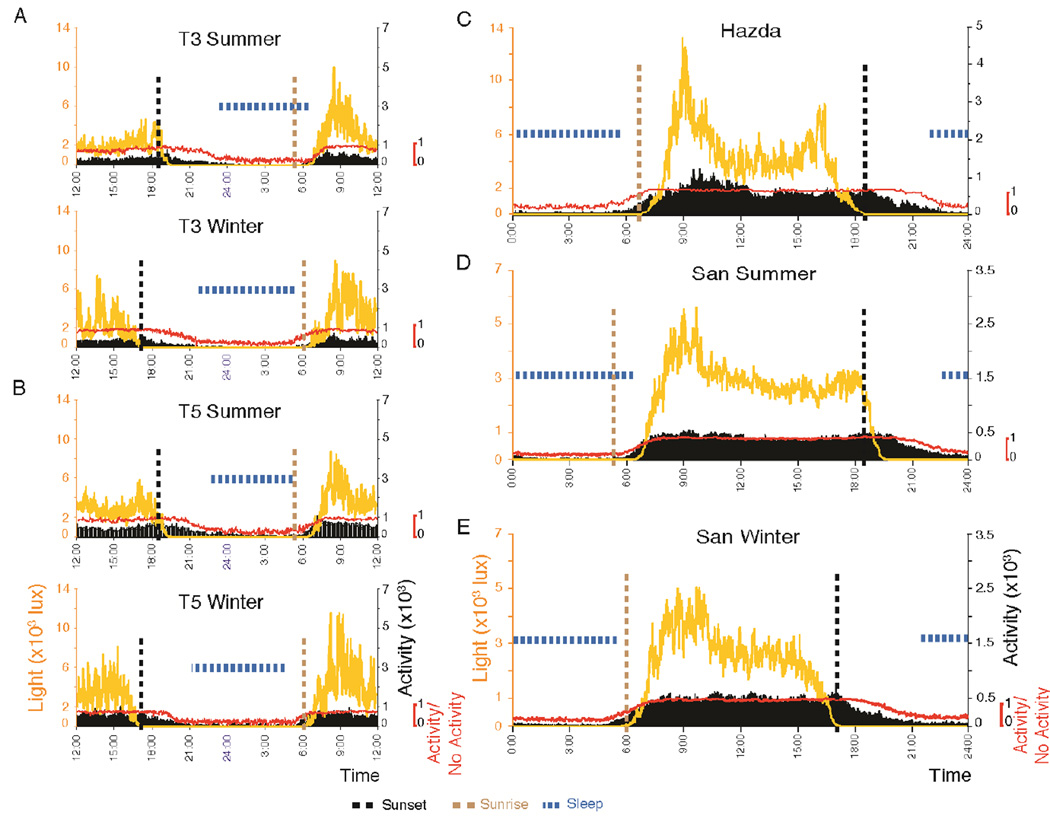Fig. 3. Light and activity plots.
(A, B) Average light and activity level in plots centered at midnight: Two participants (T3 and T5) are shown. Both have shorter sleep time in the summer despite later awakening. Participant data is their average sleep parameters over the summer or winter recording periods. Yellow line indicates subject light exposure as measured by the Actiwatch. Sunset, identifiable by the vertical interrupted black line, is not tightly linked to sleep onset. Interrupted blue bars indicates sleep periods. Red line at the bottom of each graph plots average of 1 min epochs with (+1) and without (0) activity. Note maintained and even increased activity (Black) with sunset, location of inactivity linked to sleep at the end of the dark period, awakening before dawn in winter, lack of period of activity within sleep and differences between duration of summer and winter nighttime inactivity period. The duration of these inactivity epochs are used in the algorithm that identifies sleep (Fig. 1). Sleep onset occurs from 2.5 to 4.4-h after sunset in all of the groups examined (mean = 3.3h). (C) Staying out of the midday sun. Plots centered at noon. Light levels recorded by Actiwatch drop steeply and consistently at midday, despite the increase of the ambient light level from morning (9 AM) to noon levels. Figure shows average of 60 days of data from the 10 Hadza recorded in Tanzania. It shows the reduction in light exposure during the afternoon, a lack of reduction in afternoon activity to sleep levels consistent with the lack of regular napping and the reduction in activity throughout the sleep period. No regular period of activity was seen in the night, consistent with the lack of a “second sleep” scored by the algorithm (also see fig S1). (D, E) Averaged data across all San recorded in summer and winter. Note the consistent pattern across groups and seasons. Time is local clock time.

